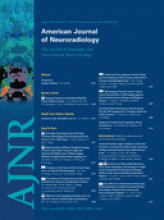Abstract
BACKGROUND AND PURPOSE: Xe-CT measures CBF and can be used to make clinical treatment decisions. Availability has been limited, in part due to safety concerns. Due to improvements in CT technology, the concentration of inhaled xenon gas has been decreased from 32% to 28%. To our knowledge, no data exist regarding the safety profile of this concentration. We sought to better determine the safety profile of this lower concentration through a multicenter evaluation of adverse events reported by all centers currently performing xenon/CT studies in the US.
MATERIALS AND METHODS: Patients were prospectively recruited at 7 centers to obtain safety and efficacy information. All studies were performed to answer a clinical question. All centers used the same xenon delivery system. CT imaging was used during a 4.3-minute inhalation of 28% xenon gas. Vital signs were monitored on all patients throughout each procedure. Occurrence and severity of adverse events were recorded by the principal investigator at each site.
RESULTS: At 7 centers, 2003 studies were performed, 1486 (74.2%) in nonventilated patients. The most common indications were occlusive vascular disease and ischemic stroke; 93% of studies were considered clinically useful. Thirty-nine studies (1.9%) caused respiratory suppression of >20 seconds, all of which resolved spontaneously. Shorter respiratory pauses occurred in 119 (5.9%), and hyperventilation, in 34 (1.7%). There were 53 additional adverse events (2.9%), 7 of which were classified as severe. No adverse event resulted in any persistent neurologic change or other sequelae.
CONCLUSIONS: Xe-CT CBF can be performed safely, with a very low risk of adverse events and, to date, no risk of permanent morbidity or sequelae. On the basis of the importance of the clinical information gained, Xe-CT should be made widely available.
Abbreviations
- CBF
- cerebral blood flow
- ED
- emergency department
- FDA
- US Food and Drug Administration
- ICP
- intracranial pressure
- IND
- investigational new drug
- pCO2
- carbon dioxide partial pressure
- PRS
- prolonged respiratory suppression
- TIA
- transient ischemic attack
- Xe-CT
- xenon-enhanced CT
- Copyright © American Society of Neuroradiology
Indicates open access to non-subscribers at www.ajnr.org












